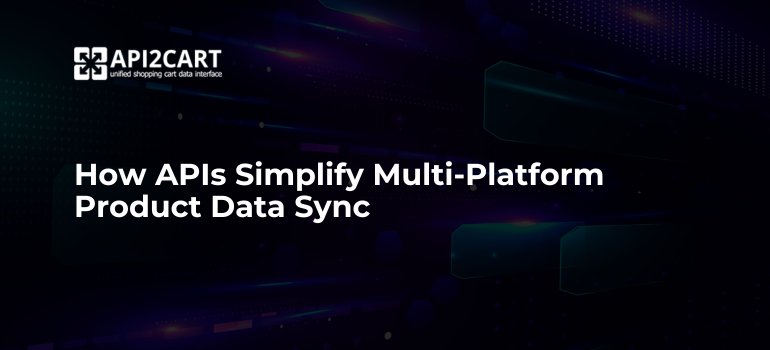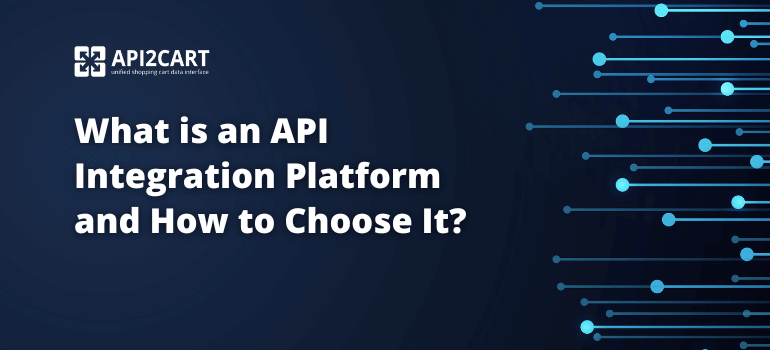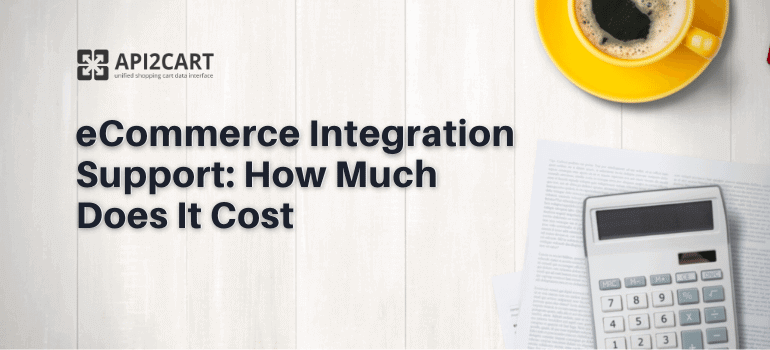
Product Data Synchronization API Process in eCommerce
Product data synchronization API is a process that ensures accurate, consistent, and up-to-date product information is shared across multiple systems, platforms, or databases in real-time or at scheduled intervals, using API. This process allows eCommerce businesses, software providers, and retail systems to maintain seamless communication and synchronization of product-related data across different sales channels, inventory management systems, ERP platforms, and marketplaces. Efficient product data synchronization API is essential for software providers offering tools, such as inventory management systems, PIM (Product Information Management) software, ERP systems, or multi-channel retail platforms. Synchronization ensures that product data remains accurate and consistent across various eCommerce platforms such as Shopify, WooCommerce, Magento, and others. Below, we’ll break down the key steps in the product synchronization API process and highlight critical factors for success:-
- Multi-channel systems
-
- Inventory management systems
-
- ERP systems

Importance of API for Product Data Synchronization
Product data synchronization APIs are essential tools for software providers in the eCommerce domain. They facilitate seamless integration and data consistency across multiple platforms and systems, ensuring that product information remains accurate and up-to-date. Here are the key reasons why these APIs are indispensable:-
- Ensures Data Consistency Across Channels: An API allows for the automated synchronization of product data such as descriptions, pricing, inventory, and media assets. This ensures that all channels, eCommerce platforms, marketplaces, online stores, and back-end systems, are aligned with the latest information, preventing errors like overselling or displaying outdated prices.
-
- Enhances Operational Efficiency: Manual updates across multiple platforms are time-consuming and prone to error. APIs automate this process, enabling businesses to save time and allocate resources to other strategic tasks. This efficiency is especially crucial for software providers catering to businesses with large or complex product catalogs.
-
- Supports Scalability: As businesses grow and add new sales channels or expand their product lines, APIs ensure that synchronization remains seamless. This scalability is critical for software providers to meet the evolving needs of their clients without requiring significant custom development.
-
- Improves Customer Experience: Consistent and accurate product data across platforms enhances the shopping experience. Customers are more likely to trust a brand when product details, availability, and pricing are uniform across all touchpoints, leading to higher conversion rates and customer satisfaction.
-
- Facilitates Real-Time Updates: APIs enable real-time synchronization, ensuring that changes to product information, such as stock levels or promotional pricing, are reflected instantly across all channels. This real-time capability is vital in fast-paced eCommerce environments where delays can lead to lost sales or customer dissatisfaction.
-
- Reduces Errors and Discrepancies: Automated synchronization through APIs minimizes human error and discrepancies, such as incorrect stock levels or mismatched product descriptions. This reliability builds trust among customers and partners, improving the brand's reputation.
- Enhances Integration Capabilities: For software providers, a well-designed product data synchronization API becomes a powerful integration tool. It enables interoperability with other systems, including ERP, CRM, and third-party services, creating a cohesive ecosystem that benefits both providers and their clients.

What Info is Needed for Product Synchronization API?
Product data synchronization API ensures product details remain accurate, consistent, and up-to-date across multiple eCommerce platforms, marketplaces, and backend systems, such as ERP systems, inventory management tools, and others. Below are the key information categories required for seamless product synchronization:-
- Product Identification Data
-
- Basic Product Information
-
-
- Product Name/Title: The product’s display name visible to customers;
- Product Description: A detailed overview of the product, including features and specifications;
- Short Description: A brief summary highlighting key features;
- Brand/Manufacturer: The name of the product’s brand or manufacturer;
- Category: The product’s classification or hierarchical grouping;
- Tags/Keywords: Searchable terms associated with the product for better discoverability.
-
-
- Pricing Information
-
-
- Regular Price: The standard retail price of the product;
- Sale Price: The discounted price during promotional campaigns;
- Currency: The currency used for pricing (e.g., USD, EUR);
- Tax Class: Specifies applicable tax rules and rates;
- Discount Rules: Conditions under which discounts are applied.
-
-
- Shipping and Fulfillment Data
-
-
- Weight: The product’s weight, typically in kilograms or pounds;
- Dimensions: The product’s physical size (length, width, height);
- Shipping Class: The classification used for shipping cost calculation;
- Delivery Time: Estimated delivery timeframes for customers.
-
-
- Inventory Information
-
- Inventory Quantity: The current number of available units;
- Inventory Status: Availability status, such as "in stock" or "out of stock";
- Backorder Status: Indicates if orders can still be placed when stock is depleted;
- Reorder Level: A threshold that triggers stock replenishment alerts;
- Warehouse Location: The physical location where stock is stored.

How to Sync Product Data Across Various eCommerce Platforms?
Integration of eCommerce software with shopping platforms is needed to synchronize product data across multiple shopping platforms, and API2Cart can help you with that. API2Cart is a unified API that provides the ability to connect your eCommerce software to 60+ eCommerce platforms and marketplaces, including Shopify, Magento, WooCommerce, BigCommerce, OpenCart, Prestashop, and others, at once. Registering for a free account will allow you to start using API2Cart. API2Cart provides an automated integration of your eCommerce software to your chosen shopping platforms. In addition, API2Cart offers 100+ API methods for managing different data from various platforms in a fast and effective manner. API2Cart API methods also will help you to get and handle (edit, update, delete) data, required for synchronization of inventory across shopping platforms, if you need to retrieve data about orders and products. API2Cart works with multiple integrations at once, so you don’t have to integrate your eCommerce software with each eCommerce platform one at a time. The other approach is time consuming and resource intensive and requires a lot of investment. Users can easily add and get product information from online stores by using product.add and product.list API methods. To update inventory levels across all sales platforms you can use the product.update method. Having access to product.info, you will be able to provide the following functionality for e-retailers:- Synchronize inventory levels;
- Create product listings;
- Generate accurate and current statistical data;
- And much more.




